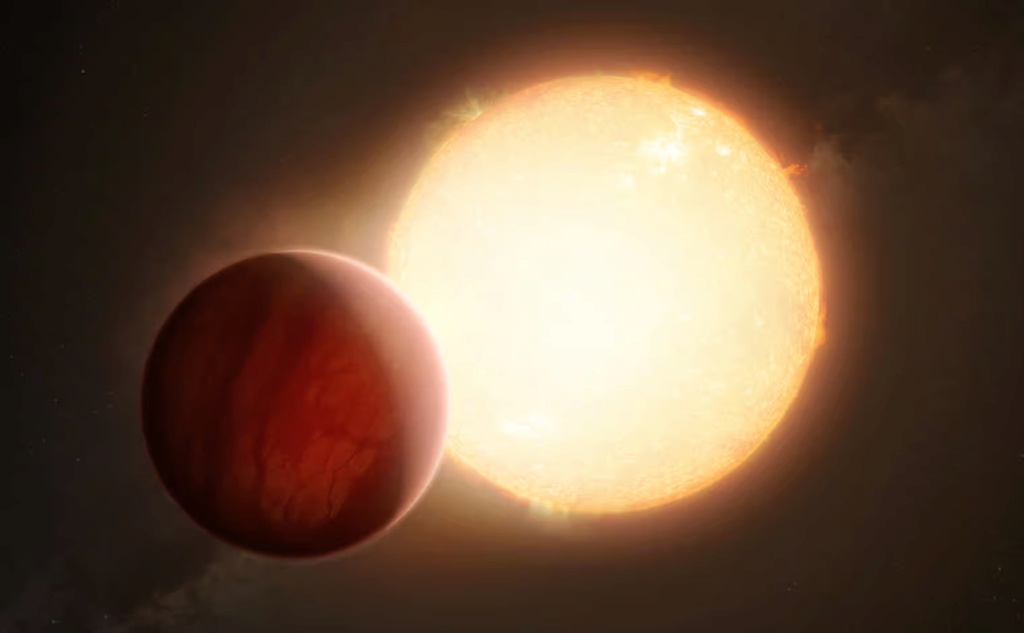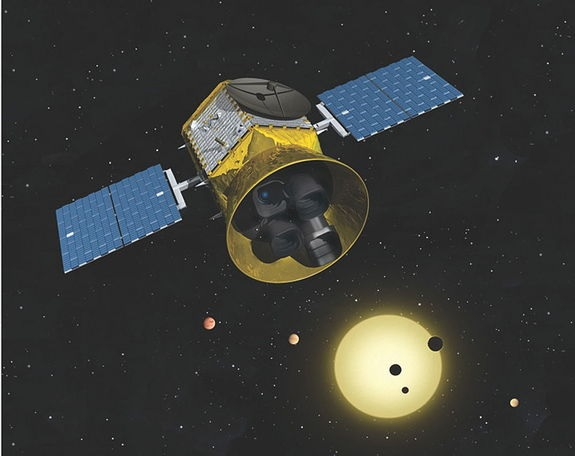This planet is getting dangerously close to its dying star

It could be a preview of what is coming to Earth next. As its host star dies, an exoplanet comes dangerously close to it, a phenomenon called orbital decline. At this rate, a collision will occur in less than three million years, which will lead to the destruction of the planet.
Interview: are exoplanets inhabited? There could be at least 100 billion planets in our galaxy alone. Hard to imagine that none can harbor life. Cnes interviewed Michel Viso, head of exobiology programs, to tell us about the conditions under which life appeared in the universe.
The action takes place at some 2,629light yearsfrom here. Astar, named Kepler-1658, ran out of fuel for thenuclear fusions, and became a dying star. Discovered in 2009 by the Kepler space telescope , it has continued to be studied since, so much so that the discovery of itsexoplanetwas announced in 2019! And the latter, aHot Jupiter called Kepler-1658b, seems to be gradually approaching its star. This is what scientists have discovered, and reported in a study in The Astrophysical Journal Letters .
With amass 5.9 times higher than that of our Jupiter, Kepler-1658borbitvery close to its host star. It completes a full rotation of Kepler-1658 in just 3.85 days and is eight times closer to its star than Mercury from theSun, hence the nickname “ hot Jupiter ”! And if it still approaches its star at the same rate, it will collide with it in less than three million years.

PLANET KEPLER-1658B WAS THE VERY FIRST EXOPLANET DISCOVERED BY THE KEPLER SPACE SATELLITE. HERE, AN ARTIST'S IMPRESSION OF THE STAR AND ITS PLANET, A HOT JUPITER.
Tidal forces bring Kepler-1658b closer to its star
This approach of Kepler-1658b to its star is called "orbital decline". The phenomenon has also been observed between Neptune and its moon Io, or between Mars and its moon Phobos . It can have several causes, but in the study it is mainly about tidal effects. When two bodies orbit around a common center of gravity, as in these planetary systems, they exert agravitational forceone over the other. The force exerted will however be more intense at the level of the parts closest to the center of gravity, and less at the level of the more distant places.
But tidal forces alone would not be enough to modify the orbit of Kepler-1658b, otherwise the same phenomenon would apply to all similar systems! This is then the direction of rotation of the twostarswhich defines the consequences of the phenomenon. In the case of the Earth-Moon system, they impose a rotationsynchronous: the Moon is locked by tidal effects, and performs at the same time a turn around the Earth and a turn on itself. So much so that it always shows us the same face!
TIDAL LOCKING CAUSES THE MOON TO ROTATE AROUND ITS AXIS IN ABOUT THE SAME TIME IT TAKES TO ORBIT EARTH (LEFT ANIMATION). IF THE MOON DID NOT ROTATE ON ITSELF AT ALL, IT WOULD ALTERNATELY SHOW ITS SIDE NEAR AND ITS SIDE FAR FROM THE EARTH (RIGHT ANIMATION).
In the case of Kepler-1658b, itsmovementis retrograde: the planet rotates in the opposite direction to that of its star. And this is what causes the rapprochement observed by the researchers! Or at least in part. Because the star Kepler-1658 also turns out to be unusual! With 1.45 solar masses but a diameter almost three times greater than that of the Sun, the star is currently in the "subgiant" stage: after having consumed all its fuel, the star's core contracts , and the nuclear fusion reactions start in a slightly more external layer. The result is a swelling of the star, hence the diameter of three times that of the Sun !

IN THIS ANIMATION, THE ORANGE SATELLITE DESCRIBES A RETROGRADE MOVEMENT AROUND ITS PLANET, UNLIKE THE OTHER THREE.
A glimpse of what awaits us, in 5 billion years
By scrutinizing the star Kepler-1658 and its planet using the transit method for nearly 13 years, the researchers observed a decrease in its orbit time of 131 milliseconds per year, a first around this type of star. ! “We have already detected evidence of exoplanets being sucked towards their stars, but we have never seen such a planet around an evolved star ,” said Shreyas Vissapragada in a press release , first author of the study andastrophysicistat the Harvard-Smithsonian Center for Astrophysics . “The theory predicts that evolved stars are very efficient at extracting energy from the orbits of their planets, and now we can test these theories with observations. »
The opportunity to learn more about this star and the phenomenon. Because it is the same destiny which awaits our Planet, when the Sun will pass to the stage of sub-giant, then tored giant. But do not panic, this phenomenon will not occur before 5 billion years, the Sun being only halfway through its life! “Now that we have evidence of a planet being sucked around an evolved star, we can really start to refine our models ofphysicaltides,” enthused S. Vissapragada . “The Kepler-1658 system can serve as a celestial laboratory in this way for years to come, and hopefully there will soon be many more such laboratories. »
Source : websites

